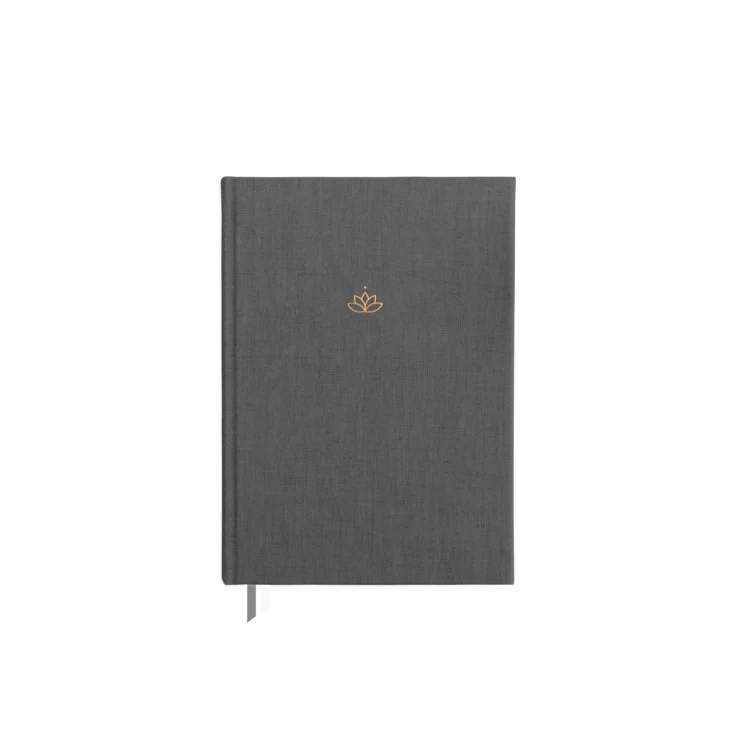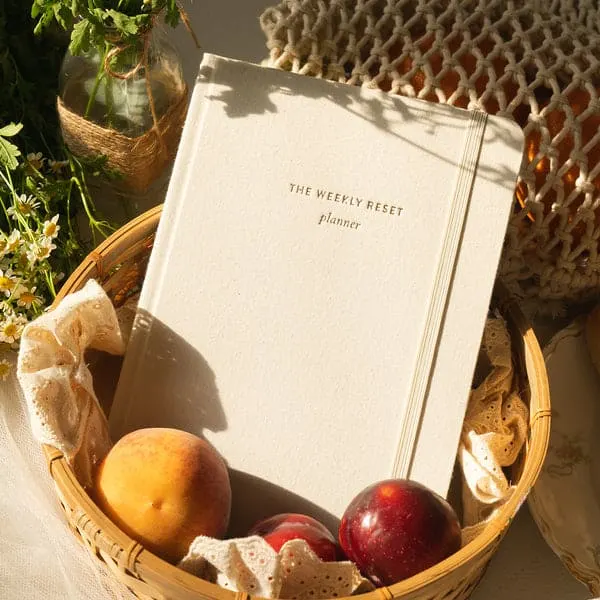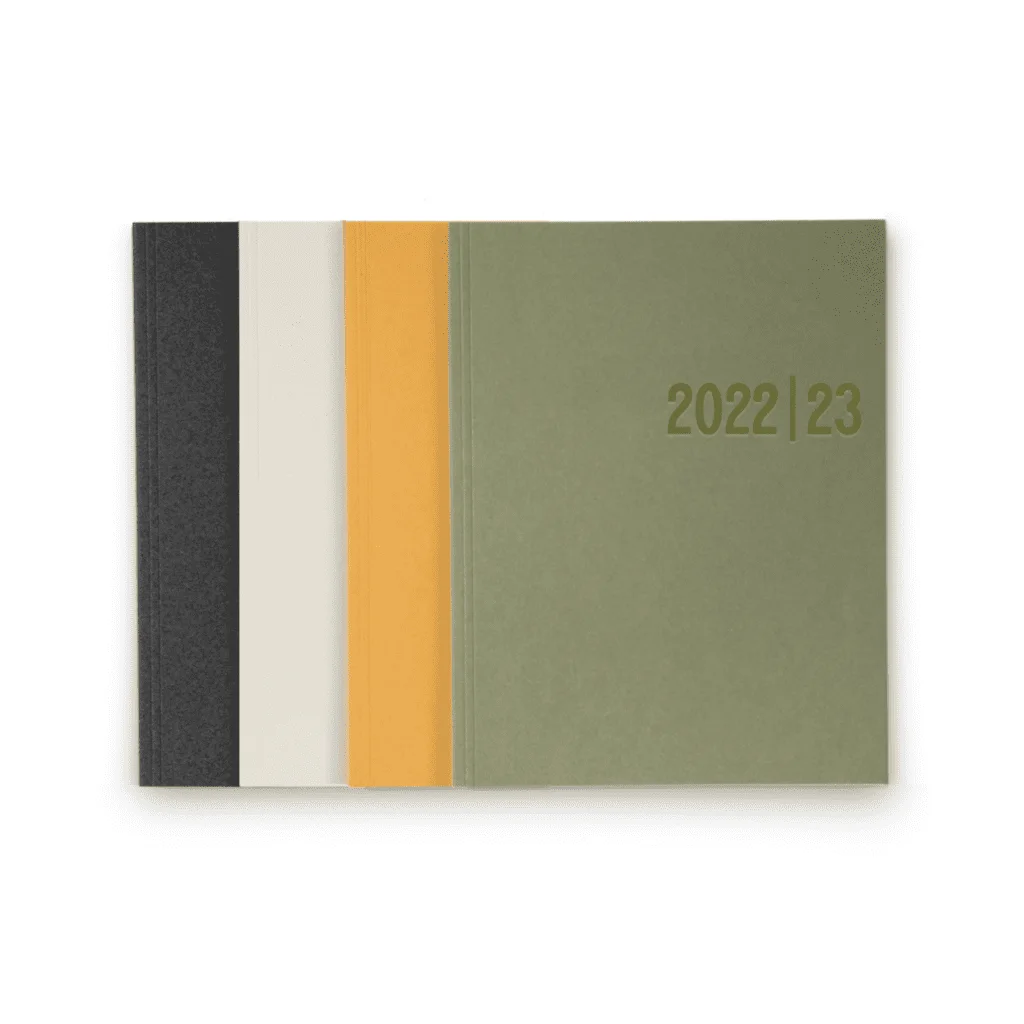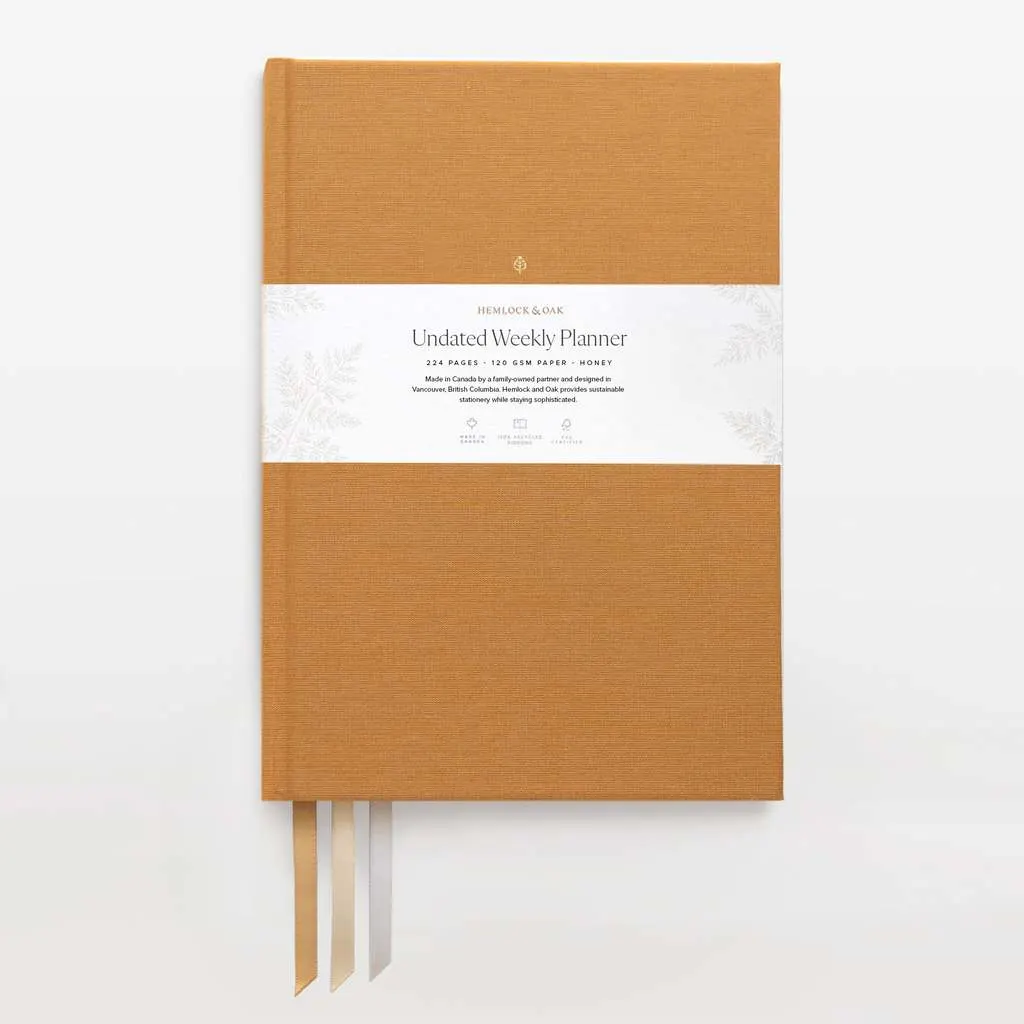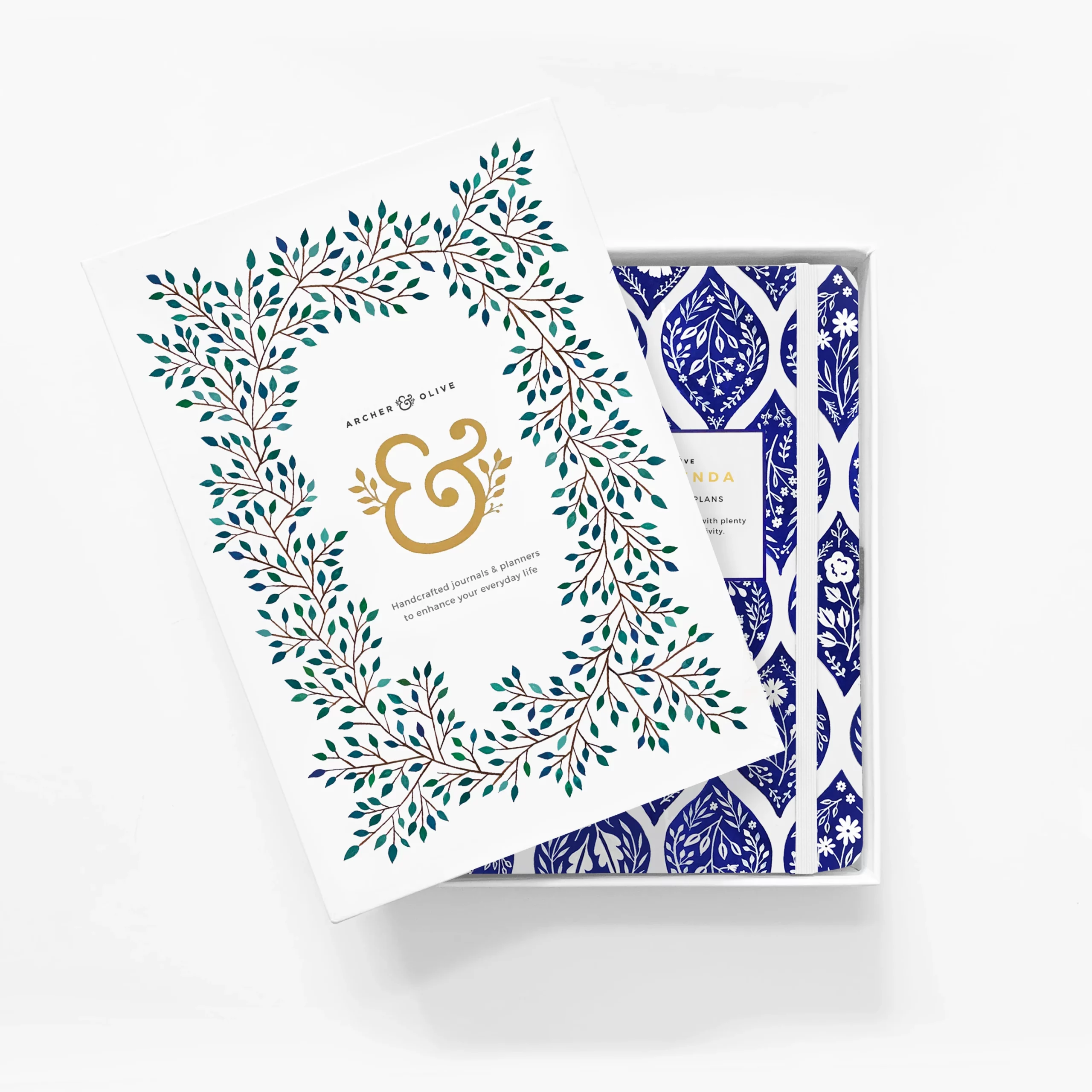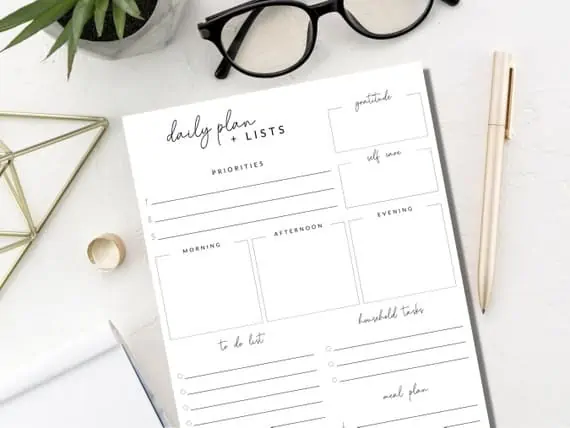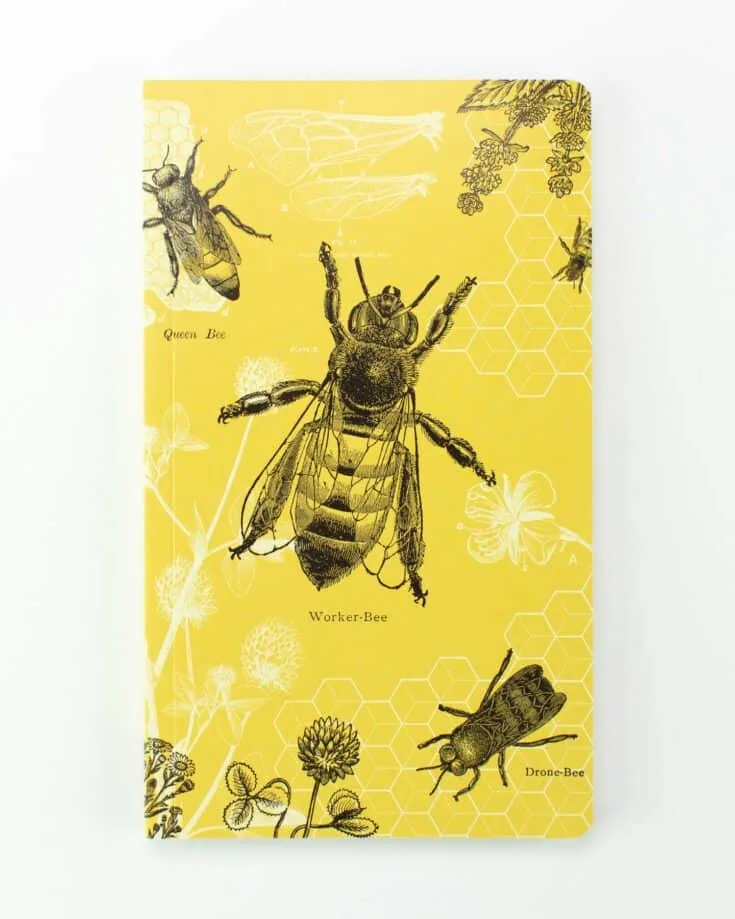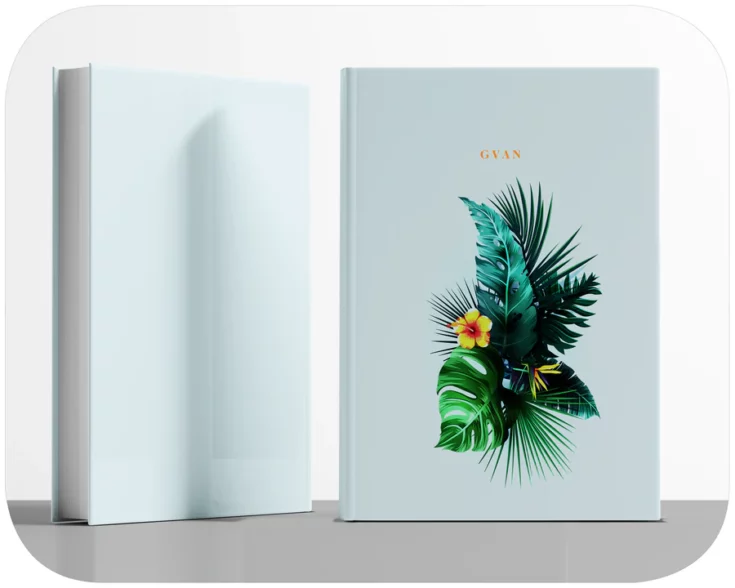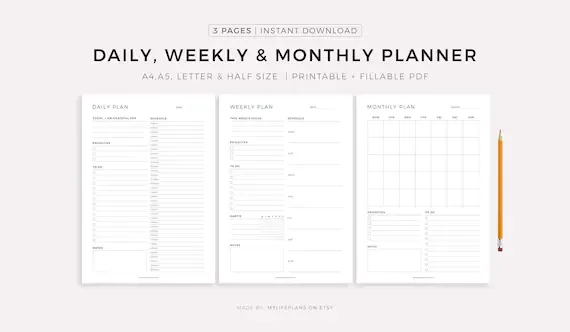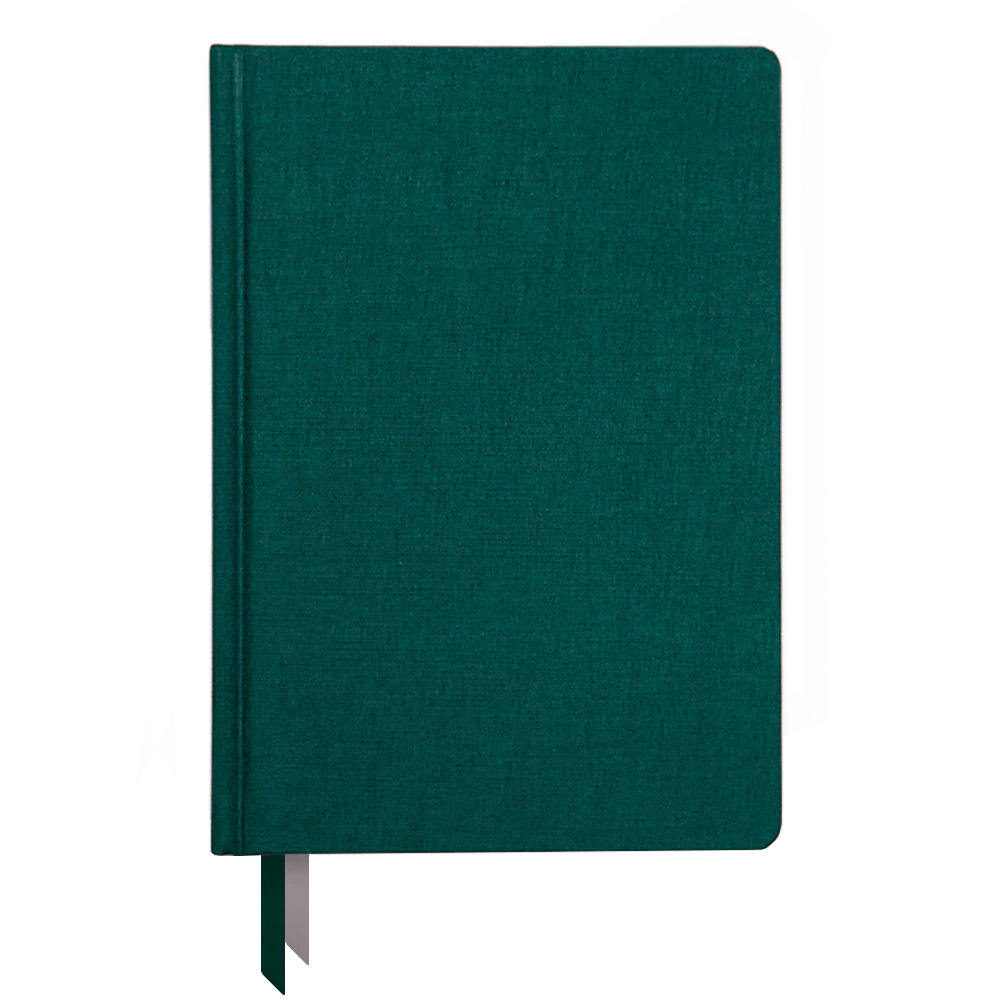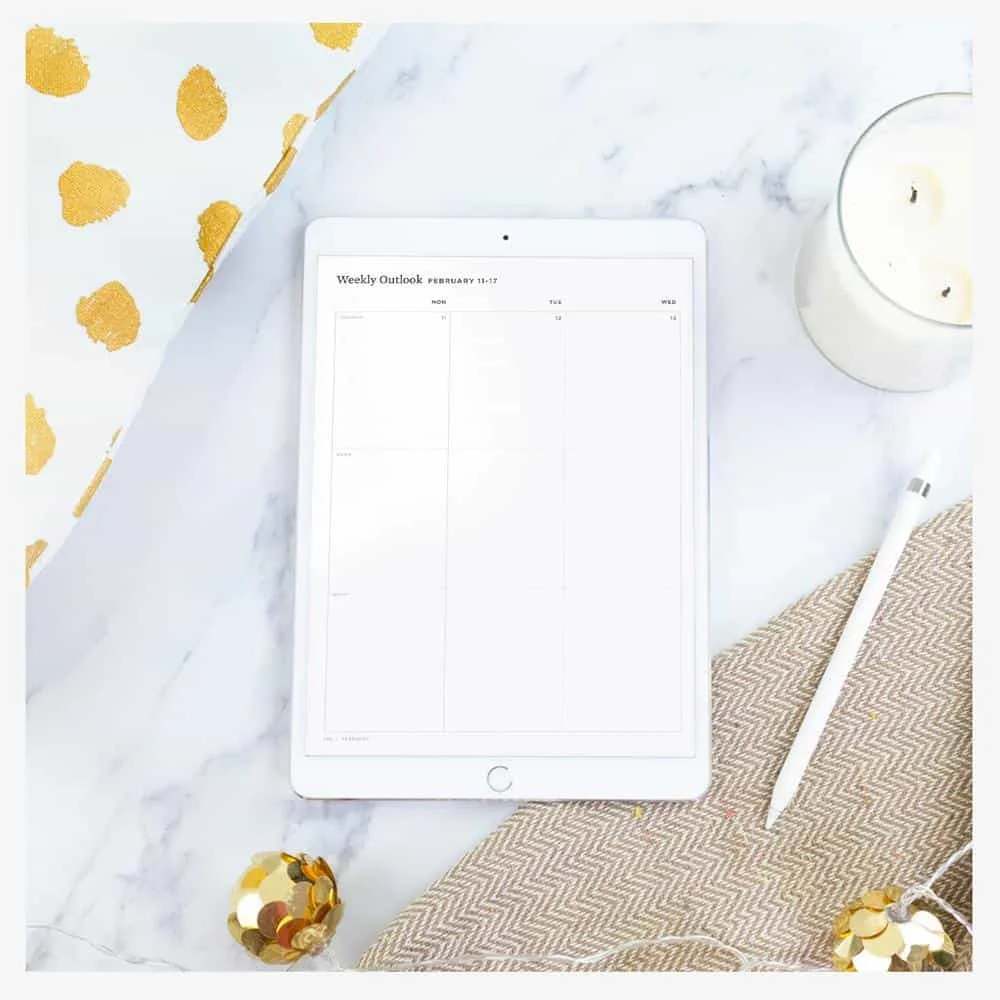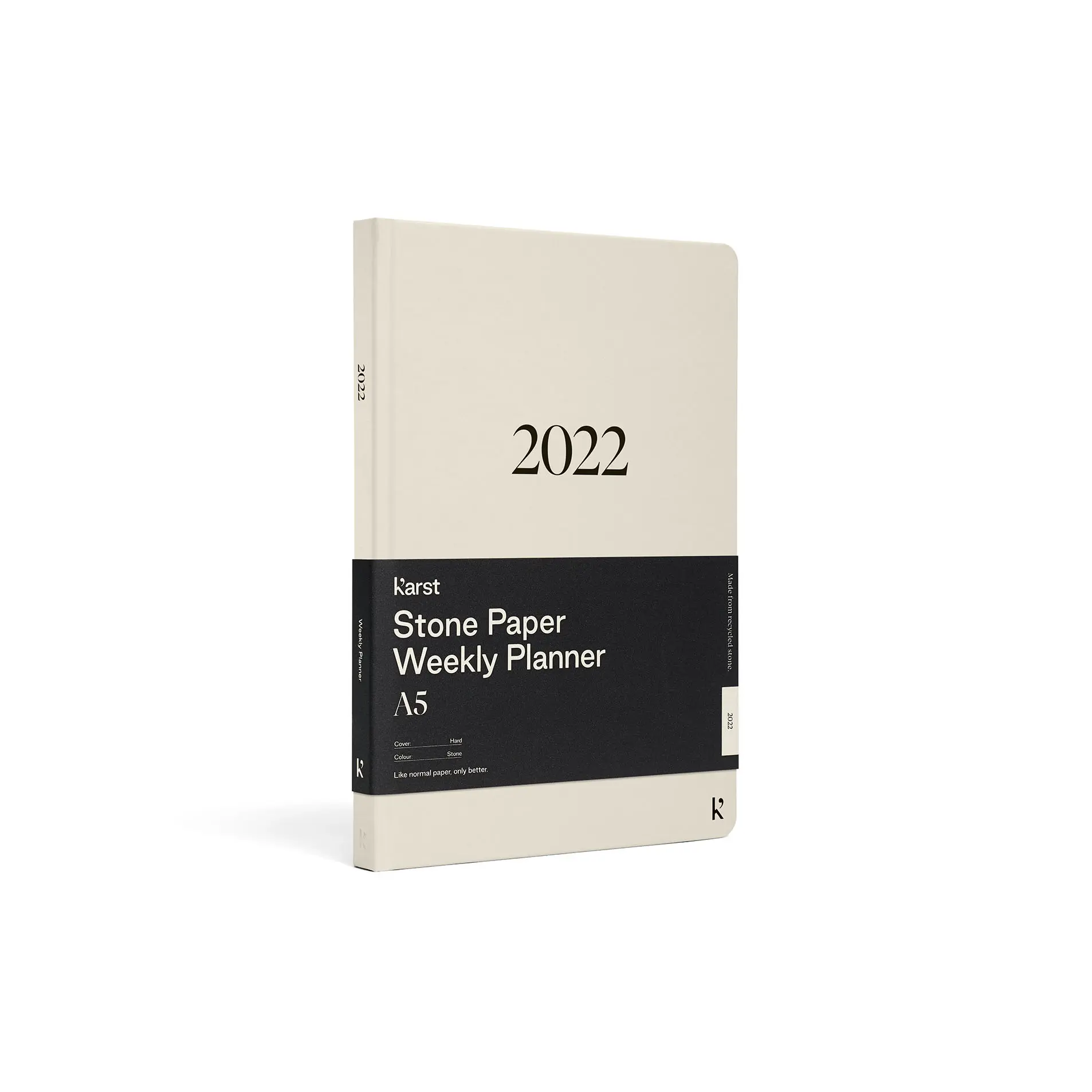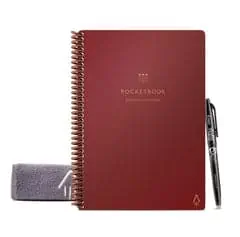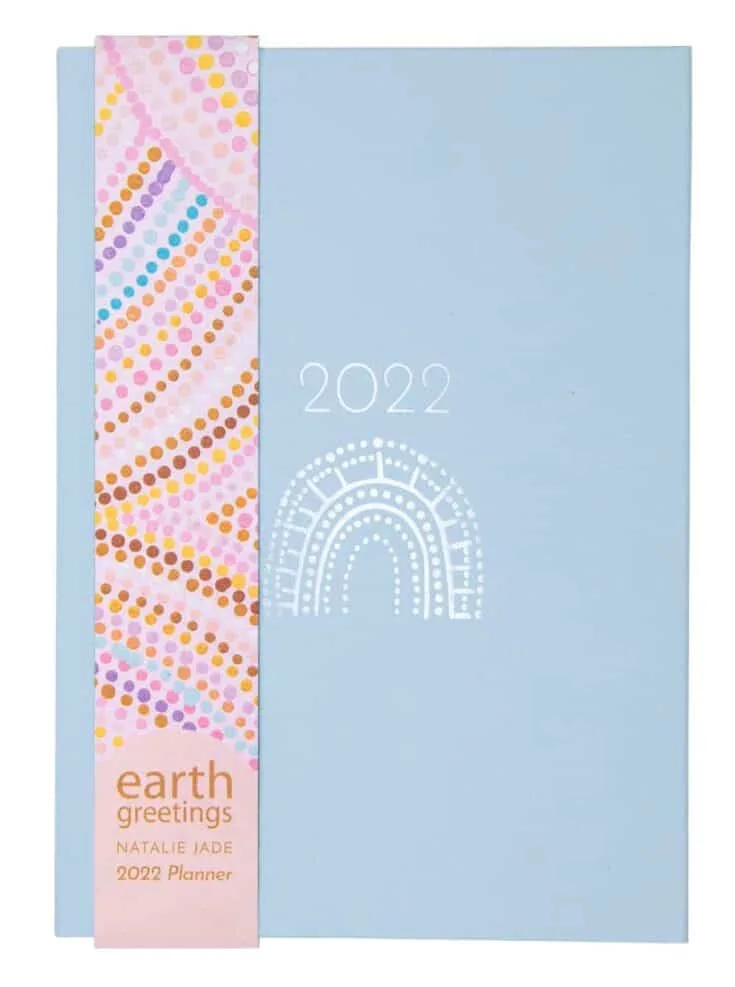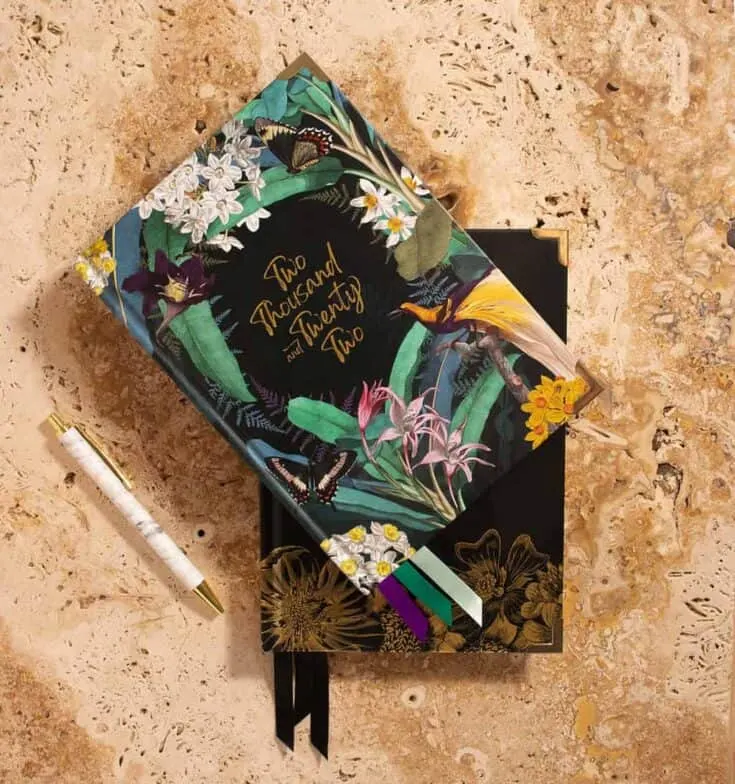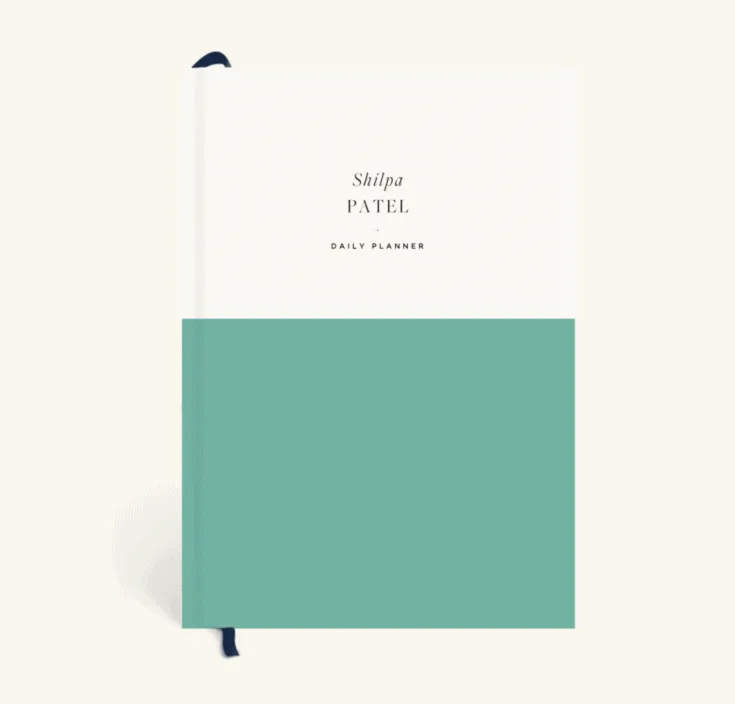For those who thrive with a plan in hand, nothing represents the thrill of a new year like a brand new planner. But what do you do with that ever-loved book when December rolls around? Recycle it? Throw it away? Keep it forever? These eco-friendly planners give you new options for end-of-use management while also considering raw materials, production standards, and packaging so you can keep making plans and still feel good about it.

What Makes an Eco-Friendly Planner?
The perfect planner doesn’t just keep your days on track and ensure you never miss dinner with Aunt Martha. It inspires you to live your life to the fullest. Whether it offers inspirational quotes, goal-setting pages, weekly reflections, habit tracking, or daily intentions, your planner is an integral part of your self-improvement journey. How you spend your days is how you spend your life, and your planner makes sure that however you spend them, you’re doing it with intention.
You want life to be even better and lovelier than it already is, and one of your goals is to use fewer—but better—products.
Starting with your planner.
If you’re a paper-loving planner type who also cares about the environment, you’ve no doubt experienced the frustration of trying to remove coil bindings and coated covers from last year’s diary so you could recycle its various components. If you’re as clumsy as I am, you may have even cut your fingers in your fervor to do the right thing, and you’ve certainly felt the frustration of realizing that the glue in a binding has destined all that beautiful paper for the garbage bin.
There has to be a better option.
Sustainable planners, journals, and notebooks have been slow to develop. For years, stores have been stamping the word green on their packaging to give us the illusion that their products provide a more sustainable option. But when we dig deeper, we find that green may mean nothing more than the inclusion of some recycled paper. I’ve seen products with as little as ten or twenty percent post-consumer paper marketing themselves as eco-friendly, even when the manufacturing process has rendered the product nonrecyclable.
Thankfully, today’s consumers are savvier and are expecting more from companies claiming to follow sustainable practices. We want to know the full environmental impact of the products we’re purchasing, and we want to support organizations that, even though they have not yet reached their own stringent goals for sustainability, are ardently striving to improve and are upfront about their shortcomings.
So what makes a planner eco-friendly?
Sustainable Materials and Recyclability
Despite many processes going digital in recent years, demand for paper-based products and other forestry products is at an all-time high. Meanwhile, paper recycling rates in the U.S. have essentially plateaued at just under seventy percent and logging centers such as British Columbia are running out of trees to harvest.
Clearly, we need to manage our resources better.
When we look at eco-friendly planners, we want to see the use of recycled paper—certified by the Forest Stewardship Council (FSC), if possible—or of alternate materials, such as stone. Virgin paper should be a last resort and should be traceable to responsible sources.
Inks should be non-toxic. Options include vegetable ink, soy ink, and other food-grade inks. Bindings should be easily removable and either recyclable or reusable or should be made from another sustainable material that doesn’t diminish the recyclability of the paper. Most sewn bindings, for example, can be recycled along with the paper. If they are bound using cotton from natural fiber, they are fully recyclable.
The cover is a tricky part. We’re going to be looking at our planner for a year or more so we want it to be beautiful, but many of those beautiful covers are not recyclable. However, we needn’t limit ourselves to a simple Kraft paper cover in the name of sustainability, though planners with this natural look can be just as cute.
Many of the covers in the eco-friendly planners below are made from high-quality recyclable cardboard and feature lovely cover designs. Be sure to check local recycling regulations in your jurisdiction as you may need to separate the cover from the paper to recycle them.
Linen and vegan leather covers, while better than plastic and leather, are generally not recyclable, though they do have reuse potential. An ideal scenario would be to have a simple cardstock cover and slip your planner inside a reusable linen notebook case, but this won’t meet everyone’s needs.
Steer clear of planners with plastic tabs and stickers as these will render your planner non-recyclable.
Dated vs. Undated Planners
While a typical daily planner might last for three to six months, a weekly planner usually covers a year and a monthly planner can cover two to three years. Traditional planners have come with the dates pre-filled, which is great if you’re an avid planner who uses their paper planner every day, week, month, and year. However, a lot of us fall behind, and for those of us who bought dated planners at the start of 2020, our investments felt entirely wasted. Never has an emptier planner been recycled than those at the dawn of 2021.
A dateless planner requires a little more effort—you actually have to fill in all the dates yourself—but they’re more sustainable in that you never waste a page. As with a traditional notebook, you simply turn to the next page when you’ve completed the previous one, whether a day or a month has passed. Because this design leads to fewer wasted pages, an undated planner is more eco-friendly than a dated one.
Packaging and Shipping
Transportation has a huge impact on the overall carbon footprint of your planner. Where was it manufactured? How many times did it change locations before reaching your hands? What distance did it travel and by what mode? All of these factors contribute to the total carbon emissions associated with that little book sitting on your desk.
Ideally, you want to look for a planner that has been designed and manufactured close to home. There are great options in the U.S., Canada, Australia, the E.U., and Britain. Because our readers are all over the world, I’ve tried to focus on companies that ship to multiple countries, but a quick Google search of “eco-friendly planners made in my country” will help you find those with the shortest distance to travel to your mailbox.
If they are manufactured locally, not only can you expect a smaller footprint, but you can also trust that the quality will likely be higher than those planners manufactured overseas. Manufacturing outside of Asia is more expensive—and you see this reflected in the prices you pay—so companies who go this route usually do so because they’re making a deliberate choice to value quality and sustainability over price.
Pay attention to the packaging materials used by the planner companies as well. Do they use biodegradable packaging or recycled boxes for shipping? These are preferable to plastic bubble mailers or mixed-material packaging that can’t be recycled.
To avoid shipping altogether, consider purchasing printable planner pages from an Etsy seller, printing them on your own recycled paper, and keeping them in an eco-friendly binder. Alternately, you could have the pages printed and coil-bound at your local office supply store for a fraction of the cost of many traditional planners. Just be sure to confirm the type of paper you want in advance.
The Company’s Ethos
Finally, pay attention to the company itself. What kind of company is it, and is it one that you want to support?
Companies that are dedicated to producing a truly eco-friendly product line usually go above and beyond in their efforts in other areas too, and it’s worth it to support them in these endeavors. Running a sustainable company that does the right thing is extremely difficult work, and the only way we will see more entrants into this market (thus increasing supply and hopefully decreasing prices), is by supporting the early forerunners.
Look at the companies’ websites and their sustainability statements if they have them. Are they a carbon-neutral or carbon-negative company? Are they a Certified B Corporation? By purchasing from them, are you supporting a small or local business?
One of the loudest ways we can voice the change we want to see in the world is by consciously deciding where to spend our money. When we support small businesses that are taking big steps, we are relaying a vital message: I believe in a better future and I support the people who are leading us there.
Now, onto the planner recommendations. These seventeen eco-friendly planners are a great choice for the beginning of the year or anytime you’re ready for a fresh, green start.
Eco-Friendly Planners
Ponderlily Undated Weekly Planner
Price: $38
Head Office: North East England
Ponderlily is a woman-founded company that seeks to ignite joy, purpose, and empowerment in women striving for a life of fullness, not busyness. They offer both dated and undated planners to help women find this elusive balance, but our focus here will be on the undated weekly planner.
This A5-sized planner (6"x8.5") contains 240 planning pages including monthly and weekly spreads. The lay-flat book binding allows you to write with ease on any surface. Made with thick 110 GSM recycled paper and vegetable inks, the Ponderlily planner has plenty of space for you to record your intentions, gratitude lists, and notes.
Printed in Europe, Ponderlily's planner comes wrapped in shrink film to protect its linen covers. The film is made of #4 plastic and is fully recyclable. The company ships its products in recyclable mailers and uses water-activated kraft paper tape that is biodegradable and repulpable.
The downside: The planner contains an elastic closure and two ribbons, both of which—along with the linen cover—will have to be removed before recycling the inner papers, and though you might find a reuse purpose for them, they're not recyclable.
The Weekly Reset Planner by Lavendaire
Price: $40
Head Office: California, USA
The Weekly Reset Planner is perfect for anyone who wants to make habits and goals a top priority. So much more than just a day planner, the Weekly Reset lets you prioritize your goals and gives you a guided reflection at the end of each week. The thoughtful layouts and prompts help you live a more intentional life and focus on the big picture.
Made from FSC-certified 100 GSM mix paper and natural soybean ink, this 6.5"x9" planner has a natural linen cover. The shipping materials are made of recycled paper and cardboard.
As a company, Lavendaire is dedicated to sustainability and giving back. A portion of the proceeds from their Artist of Life Workbooks goes to support four non-profits and America and around the world.
Lavendaire also offers an undated Daily Planner for $26 with six months' worth of intentional planning prompts such as today's focus, most important tasks, self-care, gratitude lists, and today's wins.
The downside: Again, we have two ribbons, an elastic closure, and a linen cover that will need to be removed before recycling. While the planner also comes with a complimentary sticker set, using these stickers in your planner would also make the paper non-recyclable.
Wisdom Supply Co. Zero-Waste Academic/Teacher Planner
Price: $38
Head Office: California, USA
Of the companies reviewed for this post, Wisdom Supply Co. seems to be the most dedicated to true sustainability. I might even go so far as to call them eco fanatics, and I'd mean it in the best possible way. These ladies put their money where their mouths are. Their products are not just "beautiful with a sustainable bent." They are designed from the ground up to be a truly sustainable replacement for unsustainable choices like single-use plastics and non-recyclable school supplies that wind up in the trash every year.
The 8.5 x 11" zero-waste academic/teacher planner exemplifies these values. With a cover made from wheat or hemp and post-consumer waste paper, the planners are fully recyclable. Wisdom Supply consults with waste haulers and recyclers as part of their design process. The planner contains no elastics, tabs, ribbons, or other embellishments that would get in the way of recycling.
Inside, the zero waste planner has monthly calendars and weekly spreads. The months are positioned on the two pages prior to the corresponding weeks and are visually tabbed to make them easier to flip to. The weekly pages feature six columns of six lines each for weekdays and three columns for Saturdays and Sundays.
The downside: The planner is dated and runs for the academic year (July-June), which makes for an awkward transition for those used to using calendar year planners. However, the focus of their company is on greening classroom supplies, so it makes sense that their planners are targeted at teachers (and great for homeschool moms too).
Hemlock and Oak Undated Weekly (or Daily) Planner
Price: $51
Head Office: British Columbia, Canada
Launched in 2020, Hemlock and Oak is dedicated to being Canada's most sustainable stationary company. With a focus on creating recyclable, plastic-free products made with renewable materials, they keep all manufacturing in Canada, allowing them to form partnerships and ensure sustainable production practices.
This cute planner comes with either a woven textile cover or a recyclable soft-touch matter cover made with fifty-eight percent post-consumer waste. Both options are REACH-compliant and FSC-certified. The inner pages are printed on thick 120 GSM paper using plant-based inks.
For shipping, they use kraft mailers that can be recycled in your cardboard bin along with water-activated paper tape that can go straight into the bin as well. Additionally, they use shipping labels with recyclable (rather than silicone) liners. Each planner is wrapped in kraft paper that has been screen printed by hand.
In terms of layout, you can choose either the weekly or daily spreads. The weekly spreads have light dotted graph grids and gold headings. Features include monthly overviews/reviews, exercises to help you connect with your personal values and goals, habit trackers, a space to design your ideal day, reflection pages, and additional blank pages for brainstorming.
The daily version is pretty similar but has one page per day instead of two pages per week and includes enough pages to last for six months of daily planning. Both planners are identical in size at 6.35" x 8.5".
The downside: Because of its high-quality and local production, the cost is a little higher for this planner, making it more of an investment piece. It also includes three ribbons that will have to be removed for recycling.
Archer and Olive Fleur-De-Bleu Undated Planner
Price: $21.50
Head Office: Texas, USA
With crisp, white ultra thick 160 GSM pages, the 5.75″ x 8.25″ Fleur-De-Bleu planner offers clean layouts with plenty of room for both scheduling and creating. The weekly spreads are simple with no lines or assigned times and bonus dot grid pages offer enough space for bullet journaling, taking notes, or doodling.
Whie the inner pages are recyclable, the covers are not and will need to be removed, along with the ribbon bookmark, before recycling. The planner is printed with vegan ink and shipped in eco-friendly packaging.
The downside: The paper appears to be made from virgin pulp, and the spreads don't offer anything extra in the way of goal setting or reflection.
My Calm Abode Daily Plan and Lists Printable Planner Pages
Price: $10.40
Head Office: Alberta, Canada
As mentioned above, your planning pages don't have to come in the form of a traditional book to be useful and meaningful. If you're looking for a cheaper, fully recyclable option that requires no shipping, you can simply purchase planning pages online and either use the digital version or print out as many pages as you need.
One of my top picks for printable planning pages is the Daily Plan and Lists from My Calm Abode on Etsy. The simple, printable daily sheet has room for your top three priorities, a gratitude list, a self-care section, space for your morning, afternoon, and evening plans, household tasks, a meal plan, and more—all on a single page.
The downside: If you're printing these on 8.5"x11" paper and putting them in a binder, you may end up with a planner that's too big to carry around comfortably.
Cognitive Surplus Honey Bee Undated Yearly Planner
Price: $15.95
Head Office: Oregon, USA
Cognitive Surplus offers a few different planner designs, but I love this honey bee design the most. Honey bees are symbolic of the stakes at play if humans don't start taking nature more seriously and having them adorn the front cover of your planner is a wonderful yet subtle nudge to keep this in mind.
Made from 100 percent recycled 81 GSM paper, this planner uses soy-based ink and stitched binding, making it fully recyclable. That said, you may want to check your local recycling guidelines as the thicker cardstock of the covers may need to go in the cardboard bin rather than the paper bin, in which case you'll need to separate it from the rest of the planner before recycling both.
Designed in Oregon and assembled responsibly in China, the planner is shipped in compostable packaging and has a carbon-neutral shipping and operations process. Cognitive Surplus as a whole is dedicated to reducing its environmental impact by keeping its operations as close to zero waste as possible, using certified fair-trade organic and recycled materials whenever possible, and eliminating Styrofoam and plastic from its shipping processes.
The downside: While the Cognitive Surplus planner gets a high environmental ranking, it doesn't offer any extras in terms of intentionality and goal setting, the paper is on the thinner side, and, at 4.75"x8", it's smaller than some of the other planners on this list.
Beatific 12-Month Happy Planner (Dated or Undated)
Price: $48.97
Head Office: New York, USA
Beatific offers a wide variety of covers and other personalization options for its Happy Planner, so you can get the perfect planner for you. All planners are made to order and be personalized to include your name on the cover if you like.
Cover options include soft, hard, and coil bound. Of these options, it's likely that only the coil-bound would allow for full recyclability, and it would require the removal of the coil first. You can also choose whether you wanted a dated 12-month planner or an undated one. For dated calendars, you can have them start on the month of your choosing.
In addition to your standard planning pages, you also get sections for self-discovery, budgeting, and weekly/monthly goals. All of Beatific's planners and journals are made from recycled paper, designed in New York, and produced in California.
The downside: Covers and bindings are not recyclable, we do not know what type of ink is used, and there is no information available on their shipping practices.
My Life Plan's Printable Daily/Weekly/Monthly Planners
Price: $3.18
For another printable design, check out My Life Plan on Etsy. This ship offers tons of options for printable daily, weekly, and monthly calendars. As before, simply choose the design you like best, and print it on the paper of your choosing, either at home or your local print shop.
The files also come in an editable digital version, so if you prefer to keep them on your tablet or computer and fill them out there, that's a great eco-friendly option as well.
The downside: It's not as pretty as some of the other layouts and doesn't come in an easily portable book format. However, it does allow for printing in various sizes.
Ink+Volt 6-Month Undated Goal Planner
Price: $35
Head Office: Washington, USA
The Ink+Volt 6-Month Undated Goal Planner is a planner and journal in one. It provides ample space for reflection including a roadmap for your future, a timeline and plan for the next year, goal planning pages, six undated monthly calendars, monthly goals, 30-day challenges, weekly planning, accomplishments, and reflection.
Made in Arizona with lay-flat binding, perforated notetaking pages in a lined and dot grid hybrid format, and rainforest-friendly paper, this 6"x8.5" planner will put you on the fast track to achieving your goals.
The downside: Covers are not recyclable and will have to be removed, along with the ribbon bookmarks and the inside pocket. No information on packaging is available.
Ink+Volt 2022 Digital Planner PDF
Price: $15
Head Office: Washington, USA
Ink+Volt also offers a digital planner, which can be filled in online or printed out. It has the same contents as their traditional planner but is more flexible. Skip the paper altogether and keep track of your life on your tablet, or print out just as many pages as you need. The choice is yours.
The downside: It's not in a book format.
2022 Weekly Planner
Price: $39
Head Office: New South Wales, Australia
Karst Stone Paper, a Certified B Corporation, is one of a few stationery companies that have done something really creative—they've made paper from stone. This process leads to an end product that feels and looks like regular paper, but that doesn't require trees as an input in its design.
Karst's stone paper holds a Cradle to Cradle Silver Certification. You can recycle their journals by putting them in your Type 2 stream. Made from calcium carbonate, this 5.8"x8.3” planner is completely waterproof and friction-free.
A company dedicated to carbon neutrality (or better), Karst uses carbon offset delivery for every order. They also have warehouses around the world and choose the shortest possible shipping route for each order to reduce the carbon footprint of their supply chain.
The downside: Karst's planners are dated and the 2022 edition is out of stock. If you're interested, you can join their mailing list to find out about the next release, or check out these undated action plans while you wait.
Rocketbook Reusable Planner
Price: $39.99
Head Office: Massachusetts, USA
Rocketbook is another innovative company that has taken a new spin on the idea of planners. Instead of using paper, they use recyclable polyester composite that can be reused endlessly. That is, the planner is completely erasable, so when you're done with it, you can just wipe it clean and start all over again.
Another benefit of Rocketbooks is that you can connect your planner to the Rocketbook app to save digital copies of your plans, share notes, and create digital checklists. Apparently, it doesn't yet sync your schedule with your digital calendar, but this would be an excellent feature to have. Imagine the efficiency!
The downside: The notebook only works with a Pilot FriXion pen. However, these are inexpensive and come in many colors and styles. The individual parts are recyclable but they must be taken apart first. The packing is not necessarily sustainable.
JStory Medium Weekly Planner
Price: $11
Head Office: Korea
This planner's simple design is perfect for the minimalist scheduler. If you like a really clean and simple layout, this could be the one for you.
Undated, the 5.9"x8.3" Medium Weekly Planner features recycled kraft paper inside and out, a horizontal weekly spread, and soy ink. JStory's planners are also available in larger sizes and monthly versions.
The downside: Very basic layout. Design is less aesthetically pleasing than some of the others. The natural kraft version can pick up stains, so the black may be a better choice. You could spruce it up with a fancy reusable notebook cover. (The Big Monthly calendar would fit in an A4 cover such as this.) Also, no information is provided on the production processes or the shipping materials. The retailer listed here ships from Manitoba, Canada.
Earth Greetings Planners
Price: $30
Head Office: South Australia
Earth Greetings' planners are made from 100 percent post-consumer waste paper. Printed with vegetable ink, they are 6.1"x8.66" and the paper is fully recyclable. The products are shipped without plastic or cello packaging and arrive in a cardboard box made locally from 100 percent post-consumer waste. The company is carbon neutral and so are all their products.
Planner purchases have their carbon offset with a donation to the Yarra Yarra Biodiversity Corridor. Over ten percent of the profit from every 2022 Planner sold is donated to care for native wildlife and restore habitat.
The weekly planners feature annual intentions and reflections pages, monthly intentions and gratitude pages, and dotted and lined pages for notes. The bookmark ribbon is compostable.
The downside: These are dated planners and the 2022 edition is sold out. Hop on their waitlist to be the first to hear about next year's edition. The covers are likely not recyclable.
Komorebi Luxe Weekly Planners
Price: $37.70
Head Office: Queensland, Australia
Komorebi's beautiful planners are crafted with 125 GSM FSC-certified ecologic paper that is uncoated and has no chemical additives. It feels good to touch, smooth to write on, and thick enough to avoid bleeding. They are not, however, made with recycled paper, and though the paper itself is recyclable, the covers and ribbons are not.
These 5.8"x8.3" dateless planners are shipped in recyclable cardboard boxes and include weekly page layouts, extra space for weekly to-do lists, meal plans and habit trackers, and monthly goals and budget tracking pages.
Opportunities to set goals and reflect on your progress abound with short-term and long-term goal setting pages, a year-in-review page to reflect on your achievements, travel plans, account/password lists, bucket lists, and entertainment lists. In addition, you'll find 14 lined pages and 10 dot grid pages for taking notes.
The downside: The covers are not recyclable, the paper is not made from post-consumer waste, and the planners are dated.
Papier Daily Planner
Price: $32
Head Office: London, England
From made-to-order products—with their decreased waste and lower carbon emissions—to sustainably sourced paper and recyclable packaging, Papier is committed to continuous improvement when it comes to sustainability.
Their 6"x8.5" daily planners run for 16-weeks and include space for daily schedules, to-dos, shopping lists, goals, habit tracking, and personal growth reflections. They are undated, so you never have to waste a page and you can start using them at any time of year. They are printed on 85 GSM paper in the United Kingdom, the United Stated, and Australia.
The downside: Dated weekly planners are out of stock. Daily planners are available all year. The paper used is not recycled and the covers and ribbons are not recyclable.

Sophie Agbonkhese is a writer, homeschooling mother of four, and a recovering overachiever (who occasionally relapses). She is the founder of My Cup Runs Over, a site dedicated to helping busy women simplify and enrich their lives. When she’s not writing or debugging websites, Sophie spends her time reading, dancing, bullet journaling, reading, gardening, listening to audiobooks, and striving fruitlessly to have a clean house for at least five minutes.


